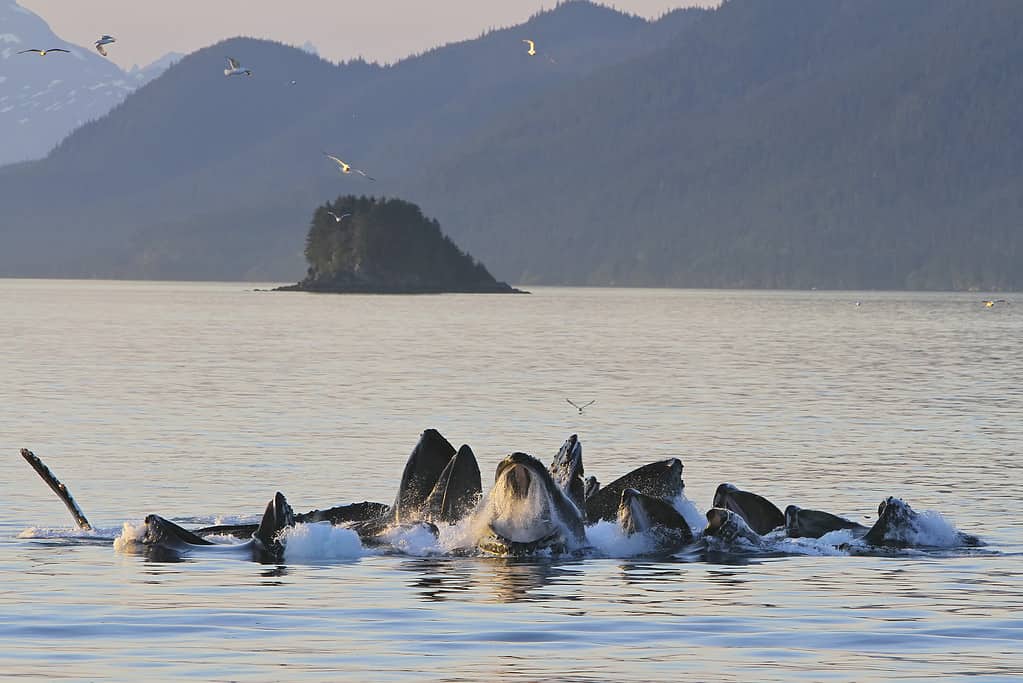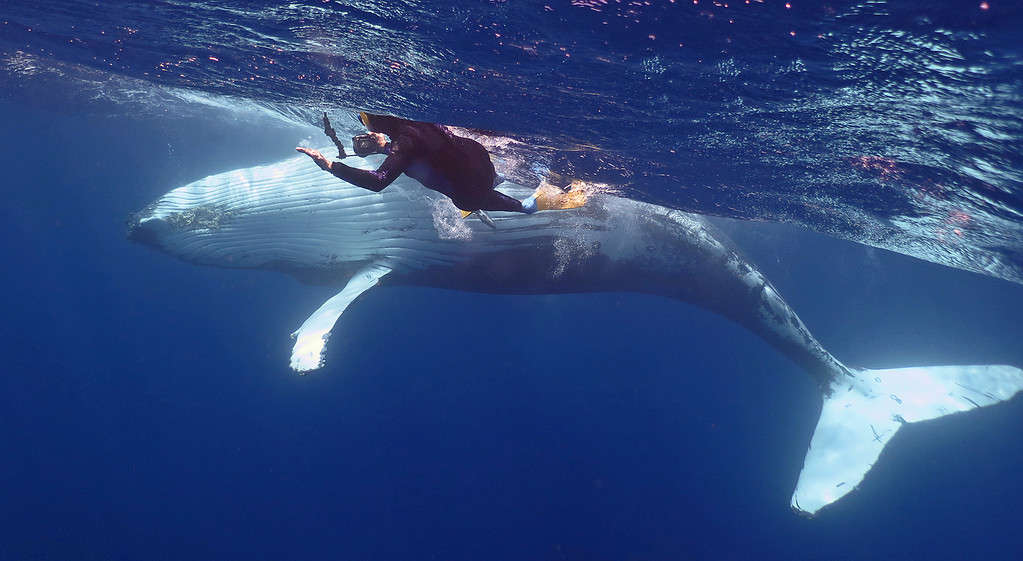Whales are some of the most graceful and breathtaking creatures in the world. They occur in every ocean and having a close encounter with them is on many people’s bucket list. There are many places around the world where you can go whale spotting and even some places where you can swim with these magnificent animals. But are whales friendly? Read on to discover when it’s safe to swim with whales and when they should be avoided. We’ll also discover whether it’s legal to swim with them.
Are Whales Friendly?

Toothed whales typically live in large groups called pods.
©iStock.com/cullenphotos
There are approximately 65 species of toothed whales and 14 baleen whales alive today. They vary in size from the dwarf sperm whale which is only seven to eight feet long, all the way up to the mighty blue whale which is the largest living animal today at 100 feet long. The toothed whales typically live in large groups which are known as pods. These typically consist of around 20 to 30 individuals, but they can sometimes be as large as 100. However, baleen whales are generally solitary animals and travel alone or in very small pods.
It’s important to remember that whales are wild animals. If they are threatened or become stressed then they may try to defend themselves. However, despite their size, whales don’t see humans as something that they can eat so they aren’t naturally aggressive towards us. Most whales are very social animals and they are also naturally very curious. Quite often, whales will approach boats and even divers simply to investigate them. There are even times when whales will have allowed people to swim alongside them. Therefore, they can be described as being friendly animals.
Although there are opportunities to swim with many different species of whales, the humpback whale is widely regarded as being one of the most popular ones due to its friendly nature. These massive baleen whales occur in waters worldwide and swimming with these magnificent creatures is a thrill that many people would love to experience.
When Is It Dangerous to Swim With Whales?

Even though humpback whales are known to have a friendly nature, you should never attempt to swim near any whale when they are feeding.
©iStock.com/srhtkn
Although whales are friendly, it is still important to remember that they are wild animals and can be unpredictable. The main thing to understand about whales is that one of the most dangerous parts of them is their fluke (tail). This is because a swipe or slap of the tail can easily injure a swimmer. Other behavior such as breaching and spy hopping can also be incredibly dangerous to swimmers. Although it looks great from a distance, whales should be avoided when they are doing this.
However, although we can try to manage our risk while in the water with the whales, there are some instances when it is too dangerous to swim with them at all. For a start, you should never swim with whales when they are feeding. During this time, they are actively hunting for their prey and are not likely to be in a friendly or inquisitive mood. Not to mention, you don’t know what prey they’re hunting for!
Another time that it is dangerous to swim with whales is when there are calves around. Females are extremely protective of their calves which typically remain with them for several years. Some calves even continue to nurse from their mothers until they are two years old! During this time the female will keep the calf close to her side to keep it safe from predators. If the calf wanders off and becomes separated from her then she may become agitated and rush to its aid. If you’re in the water and get between the female and her calf then she may see you as a threat. Also, calves are much more likely to be disturbed by swimmers which can cause them to swim away from their mother.
When is it Safe to Swim With Whales?

The safest time to swim with whales is outside of the breeding and migrating seasons when there is a resident pod in the area.
©Mark Nyman/Shutterstock.com
So, although whales are large animals and they can be dangerous at times, it is still safe to swim with them under certain circumstances. However, even when you’re in the water with them it’s important to avoid putting yourself into a situation where they can hurt you. This means avoiding the situations that we’ve just mentioned. Plus, even when you’re swimming with whales you should always avoid touching them as this can easily stress them out. The whales won’t necessarily mean to hurt us, but as they are so big and powerful even a small bump from a whale can do some damage.
However, swimming with whales can be a magical experience and the best opportunity to have a close encounter with these magnificent animals is with a reputable tour guide. The safest time to swim with whales is outside of the breeding and migrating seasons when there is a resident pod in the area. A good guide will know the best places in the area to swim with whales and be used to their regular behavior. So long as you follow their instructions and remain calm and respectful of the whales then swimming with whales is relatively safe.
Is It Legal to Swim With Whales?
Now that you know when it is safe and when it is dangerous to swim with whales, we need to cover the question of whether it is legal to swim with whales. As many species of whales are under threat and endangered it is actually illegal to swim with whales — or certain species of whales — in some countries. For example, all whales are protected by law in Mexico and it is illegal to swim with them. It is also illegal to swim with them in Costa Rica, Mauritius, the Azores, and some parts of Hawaii to name just a few.
In other places swimming with whales is legal only with a special permit. Permits are a vital part of whale conservation. This is because they ensure that only a limited number of people enter the water with the whales. They also mean that swimming can be restricted during the breeding season so that the minimum amount of disruption is caused to these beautiful animals. Most tour operators that offer swimming with whales are licensed. They are also usually able to provide the required permits, making this the easiest and safest way to enjoy swimming with whales.
The photo featured at the top of this post is © anna sanfeliu gozalvez/Shutterstock.com
Thank you for reading! Have some feedback for us? Contact the AZ Animals editorial team.






